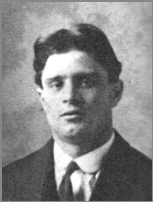Brad Parker's new book on Kerouac -- signed by the author -- arrived last week via the mail and I've already read it. Given my reading habits of late, this is unusual, but I found it hard to put down once I got started. Titled Kerouac: The Man & His Visions, this is a 100th Birthday Tribute and Volume 1 of what apparently is to be a series. One caveat: Brad is a friend of mine so this review is necessarily biased.
Parker is the author of another (brief) Kerouac biography -- Kerouac: An Introduction -- published in 1989 by the Lowell Corporation For The Humanities, Inc. for the twentieth anniversary of Kerouac's death. Which raises the question: Do we need another Kerouac biography and, if so, what gaps in scholarship would be filled by it? I hope to answer that question as I continue on with my thoughts on the book.
276 pages, with 17 pages of endnotes, Kerouac: The Man & His Visions takes a deep dive into several aspects of Kerouac's life, informed by Kerouac's works, letters, and journals, including some items in the Berg collection, and various other biographers such as Gerald Nicosia. Of course, despite Kerouac's books being roman à clef, we know that he took many liberties in fictionalizing real-life events and timelines, so it is with caution that any biographer should rely on those books for facts, especially if not triangulated with the subject's own journals and letters and with other dependable sources of information. Parker does a good job with such triangulating.
A main feature of Parker's biographical approach is to pull disparate but similar experiences into one place. To wit, Chapter 1 of the book focuses on Kerouac's various times spent in Mexico. These seven visits to Mexico are spread across Kerouac's works, journals, and letters, but Parker pulls all such visits into one coherent description, beginning thus:
It was in a 1937 Ford two-door sedan jalopy that Kerouac entered Mexico City for the first time in June, 1950. He had been the driver for part of the 1700-mile route, but it was the frenetic Neal Cassady who commanded the car most of the way from Denver, where Jack had been signing copies of The Town and the City, published three months earlier to less than stellar acclaim. A new friend, Frank Jeffries, close in age to Kerouac and an ex-serviceman, rounded out the trio. (p. 1)
Chapter 2 delves into Kerouac's foray into Buddhism and details both his passion for as well as his misgivings about this eastern way of being in the world. Naturally, this chapter relies on works such as The Dharma Bums, Some of the Dharma, and The Scripture of the Golden Eternity, but also presents information gleaned from a number of letters as well.
In Chapter 3 Parker describes no less than 20 times when Kerouac made his way across the United States (counting each coast-to-coast leg as one trip). I had no idea Kerouac had made so many trips, but Parker backs up each one with endnotes. This is one area where Parker relies a little too heavily on Kerouac's fiction and could bolster this section with more triangulation of facts.
Chapter 4 describes Kerouac's solo adventure on Desolation Peak in the Cascades, a trip to Europe, and concludes with publication of On The Road and instant fame. Some would say Parker's endnoting is a hindrance because it is so frequent, but I would counter and say it is not enough, as there are plenty of quotations that are not endnoted and the reader must make assumptions about the source. There is an occasional typo as well, but not enough to hinder comprehension.
In Chapter 5 Parker pulls together the stories of three major loves in Kerouac's life: Mary Carney (Maggie Cassidy), Alene Lee (Mardou Fox of The Subterraneans), and Esperanza Villaneuva Tercerero (Tristessa). It is interesting to read about Kerouac's three major relationships juxtaposed. I might have added a section on Bea Franco, the "Mexican girl" from On The Road.
Chapter 6 provides a brief look at each of three less well-known Kerouac works: Pic, Old Angel Midnight, and cityCityCITY. Chapter 7 focuses exclusively on analyzing Big Sur, Jack's "last significant book" (p. 240). Finally, Chapter 8 concludes the book and looks at Book of Dreams, starting with the caveat that one must be "careful about slipping into interpretation of Kerouac's dreams" (p. 250). This chapter, and thus the book, stops rather abruptly, which brings me to a small criticism. I was always taught that, in good writing, the author tells you what she is about to say (introduction), says it (content), and then tells you what she said (conclusion). Kerouac: The Man & His Visions is all content, and could be strengthened by a traditional introduction and conclusion.
I found Parker's book eminently readable, hard to put down (as I said before), and unique in its approach to a Kerouac biography, pulling together various but similar information into one place (e.g., Kerouac's 7 visits to Mexico, his 20 cross-country road trips, and his three major loves). I don't know of another Kerouac biography that attempts this, at least with these specific subjects. That uniqueness answers the question I posed earlier about the need for another Kerouac biography. Parker is obviously passionate about Kerouac and it shows in his writing -- some of it is Kerouacian prose in style. It is always interesting to see Kerouac through another person's lens, and I say keep the biographies coming if they fill a gap as Parker has done here.













